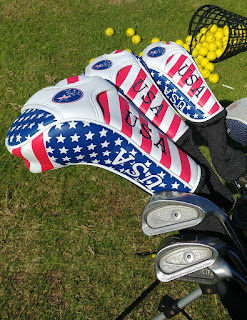These golf tips are on the short game, from one-hundred yards and in...probably some of the most important tips you will read this year. Learning about your golf clubs is the first step to mastering them.
(Editors notes) Before "digging into" this article, let's address a few terms, specifically BOUNCE, which is, plainly put, where the bottom of the club, or sole, touches the ground and LOFT, the number of degrees that the face of your golf club is angled upward.
Bounce is a measurement of degrees; the higher the number, the more the leading edge of your golf club will be off the ground at address. Thoughtco.com discusses bounce as, "The more bounce a wedge has - the higher its bounce angle - the better it will resist digging. Another way of saying it: Higher bounce equals smaller, shallower divots."
Picking Your Wedge With Confidence
Not all wedges are created equal. Some fly high, some get you distance, and some are left in your golf bag for the rest of eternity, never again to see the light of day. It doesn’t have to be that way, though. Let’s get you the basics on when to best utilize each wedge to your full advantage.The Pitching Wedge
This is the old standby. Of the standard selection of wedges, the pitching wedge will get you the most distance but offers the least loft.Recreational golfers are likely to be most familiar with their pitching wedge distance, using it for any and all occasions that call for a wedge. To that, I ask: would you use a fork to eat soup? And you might answer “Only if all the spoons are dirty and it’s not my turn to unload the dishwasher.” To which I would reply “I think we’ve lost the idea behind this analogy.” The point is that the pitching wedge is not your only option. There’s also...
The Gap Wedge
The Gap is not only the place where your little sister worked part-time during high school; it’s also a wedge that can help you form a more complete short game.It’s called a gap wedge because it covers the yardage gap between your (longer) pitching wedge and (shorter) sand wedge. Not every beginner will necessarily have a gap wedge in their bag, as it’s not always included in a set of irons. As you begin to dial in your distances more accurately, a gap wedge may be worth adding to your bag to make sure any yardages are covered.
 The Sand Wedge
The Sand Wedge
For many beginners, the sand wedge doesn’t offer much distance for the average player, but it can provide some extra loft from the 40-70 yard range.You’ve likely become acquainted with the sand wedge during some trying times in the greenside bunker.
Although the sand wedge is designed to hit out of the sand, it’s not the only time you can use it. The sand wedge can be just as effective for short distances from the rough or the fairway as well.
The Lob Wedge
You may have seen one of Phil Mickelson’s famous “flop” shots around the green, where he takes a full swing to get maximum height with within a short distance. This type of shot is typically executed with a lob wedge.The lob wedge is perhaps the least common wedge for a beginner to carry and is arguably the most difficult of the wedges to hit as intended. To achieve the desired height, you’ve got to swing hard.
The main issue with the lob wedge is that, if you take a full swing and fail to get under the ball properly, your fellow golfers may be calling you Captain Sully Sullenberger. (As a reminder, golf balls don’t float on the Hudson River.) Overall, the lob wedge is a high risk/high reward club that you may want in your arsenal some day. Whether or not today is that day...I’ll leave up to you.
Watch Phil Mickelson's amazing golf flop shot at Deutsche Bank Championship: http://bit.ly/2B37E4c
READ: Improve Your Short Game in 2 Easy Steps
Brian Adams Bio:
Brian is a left-handed golfer who lives in the Greater Boston area with his wife and their adorable baby girl. He is a regular contributor to the comedy website RECYCULUS and, when not on the golf course, occasionally directs music videos and performs stand-up comedy. For more info, visit https://brianadamsmedia.wordpress.com/page/.
Add your comments to this Golf for Beginners golf blog below and @tag us with your thoughts on Twitter Golf4Beginners!
Golf Club loft chart: Golfalot.com
Golf Ball in bunker: PXHere.com







